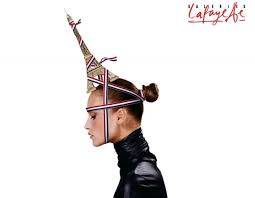- More Thinking on Your Thumbs | Travis White Communications on Five Tips for the Job Interview
- Are You The Boss Of You? | Travis White Communications on Can You Frame Yourself?
- Travis on Why Study Critical Thinking?
What Do The French Know About Advertising?

Why change?
We lived in Paris for three years at the turn of the century. Being a marketing guy, I studied the advertising. I rode the Métro to work most days and became very familiar with advertising posters designed to appeal to commuters.
Like most advertising, some of it was great, some of it was obscure, much of it was in between. What struck me most (besides the lingerie ads) was how long an ad might be used. Companies ran their ads for much longer periods of time than I was accustomed to in the United States. Similarly, they would recycle and re-use ads that they had used in previous years.
Take rentrée advertising, for instance. Each year, all of France goes on vacation to the countryside for the entire month of August. Then, in early September, they ”re-enter” (rentrée) the cities and prepare to go back to work and school. It’s a steady rhythm and advertisers are ready for it.
In 1999, during my first September in Paris, I saw hundreds of ads geared to the rentrée. To get an idea of the scope, think of our back-to-school ads and multiply them by two or even three.
I had heard of the rentrée so the scope didn’t surprise me. What did surprise me was that, in September 2000, I saw exactly the same ads. I expected a new wave of advertising and a new wave of creativity. Instead, I saw the same ads repeated from the previous year. In September 2001, I saw them again.
I was reminded of this the other day when I picked up a current issue of a French magazine and leafed through it. I saw a full-page image for Galleries Lafayette – a major department store – that I had first seen at least a dozen years ago. (It’s the image shown above). It’s a striking image and very recognizable and I gather that Galleries Lafayette sees no reason to retire it.
This also reminded me of a CEO I once worked for. Every now and then, he would call me in and tell me that, “Our messages are getting stale. Time for some new messages.” Unfortunately, he wasn’t talking about high-level metaphors and ad copy. Rather, he was talking about the fundamental elements of the brand. He thought we were repeating ourselves and we needed to stop it.
So, who’s right? Well, Galleries Lafayette is doing better than my old company. The lesson for me is that the brand itself shouldn’t change (unless there’s a very good reason). For instance, Volvo’s brand is safety. Volvo changes the metaphors and images it uses to deliver the message but the message is always safety. So if you’re thinking that familiarity breeds contempt, you’ve got another think coming. Familiarity actually breeds trust. And trust breeds sales.
Designed by Garage Sale Industries, LLC.